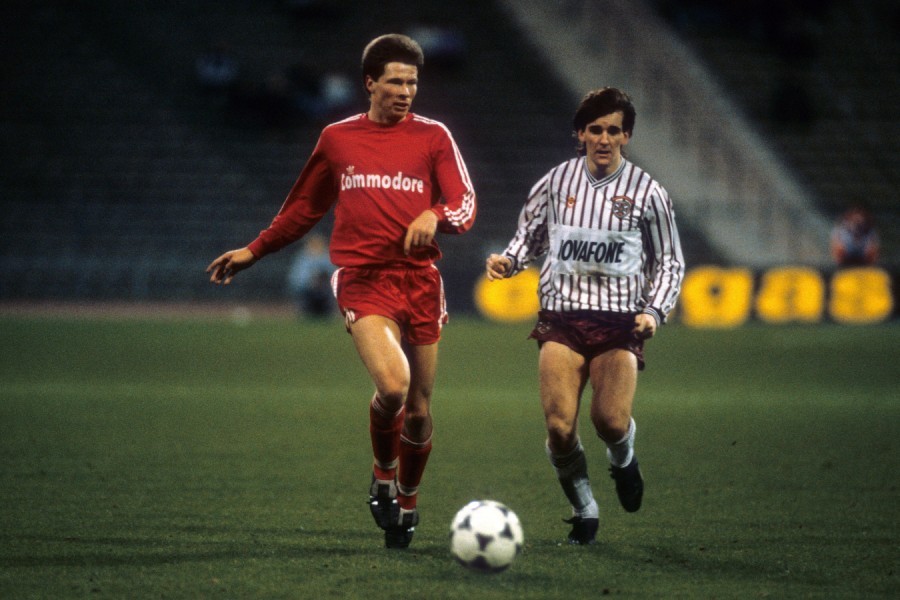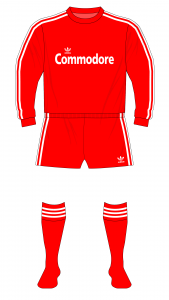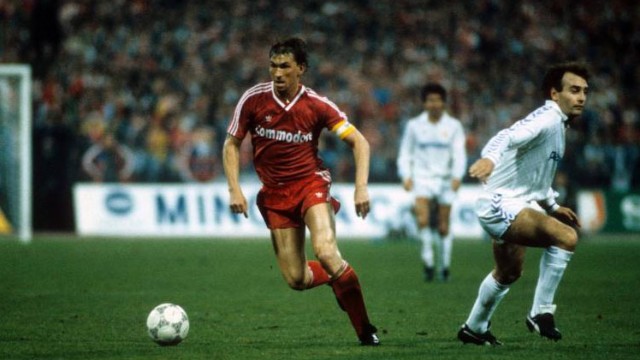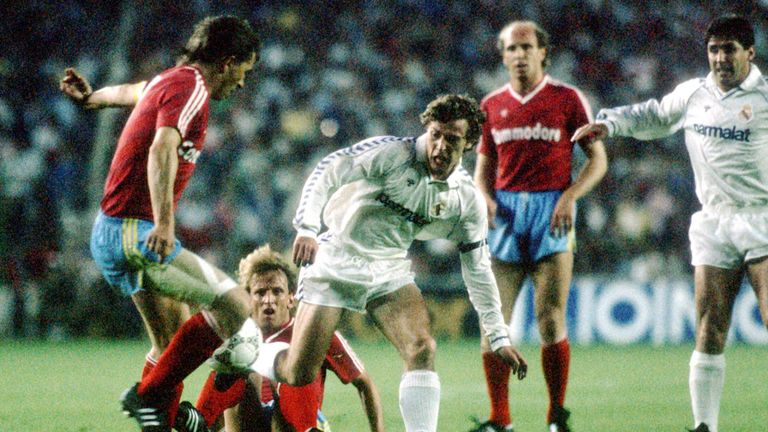There are quite a few kit-related things we hold to be symptomatic of the plight of modern football.
The changing of kits when there is no colour-clash is one; the recolouring of crest on third kits another; and, of course, altering sacred colour-schemes.
Jay Mansfield has deconstructed these tropes in a mammoth post entitled New Traditionalism, which we highly recommend reading. The most recurrent complaint remains the frequency of kit-changes, even though most major clubs around the world have been on a one-season, three-kit cycle now for more than a decade.
And yet, 32 years ago, Bayern Munich reached the European Cup final wearing at least eight different kit configurations in nine games.
Bayern’s close relationship with adidas meant that the club was often used as a test-bed for the introduction of new stylings and the 1986-87 European campaign provided a wide array of offerings. Advertising rules meant that there had to be some modification from the shirts used domestically – the Commodore wordmark or logo could be used, but not both – however the levels of change were unprecedented.
The club were seeking a domestic three in a row, which they would go on to achieve, and were in the midst of five Bundesliga titles in six seasons, their most successful run up to then.
FIRST ROUND
The draw for the opening round of the 1986-87 competition saw them face the Dutch champions, PSV, and the away game in Eindhoven saw Bayern have to change from red for the only time in that cup run. At the time, PSV favoured red shirts with white shorts and socks, so Bayern’s default change of all-white would have had potential for confusion and, as a result, light blue shorts and socks were used as they won 2-0. While Bayern had previously worn a red version of the diagonal pinstriped shirt, it wasn’t seen in 1986-87.
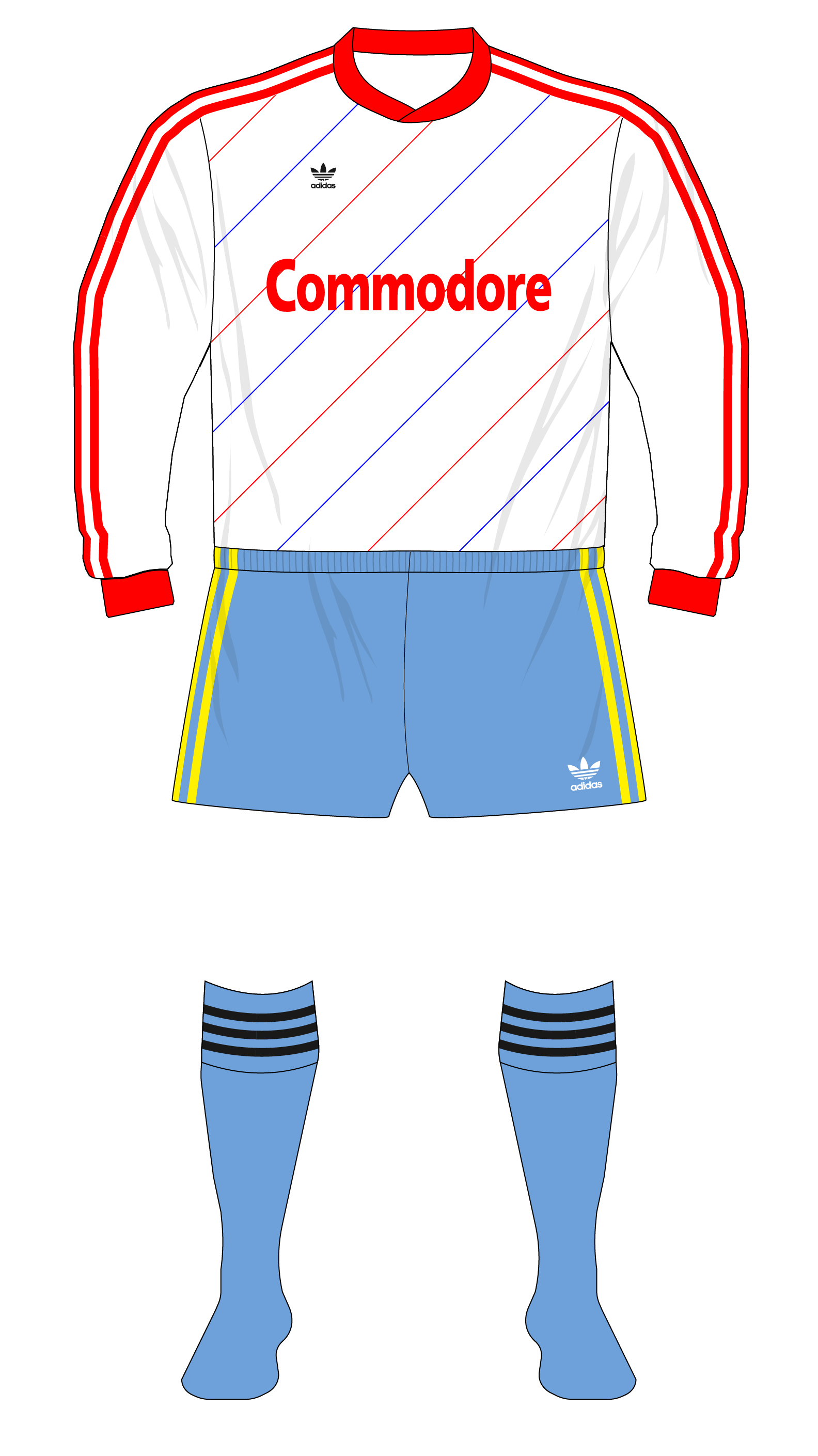
The blue shorts were from the ‘Brazil’ kit first worn against Kaiserslautern in 1983 and in that 1986-87 campaign. Coach Udo Lattek was superstitious and felt the shorts had mystical powers, so much so that they were worn with the red shirts and socks against Stuttgart in the 1986 DFB-Pokal final – an approach that would be seen again.
Back in Munich, Bayern used a shirt with a v-neck collar and white panels on the arms – this design would later appear on the USA and USSR national teams as well as Hamburg. A scoreless draw – Lothar Matthäus scored a penalty but had to re-re-take it due to encroachment and had the second attempt saved by Hans van Breukelen – sent them through to a second-round meeting with Austria Vienna.
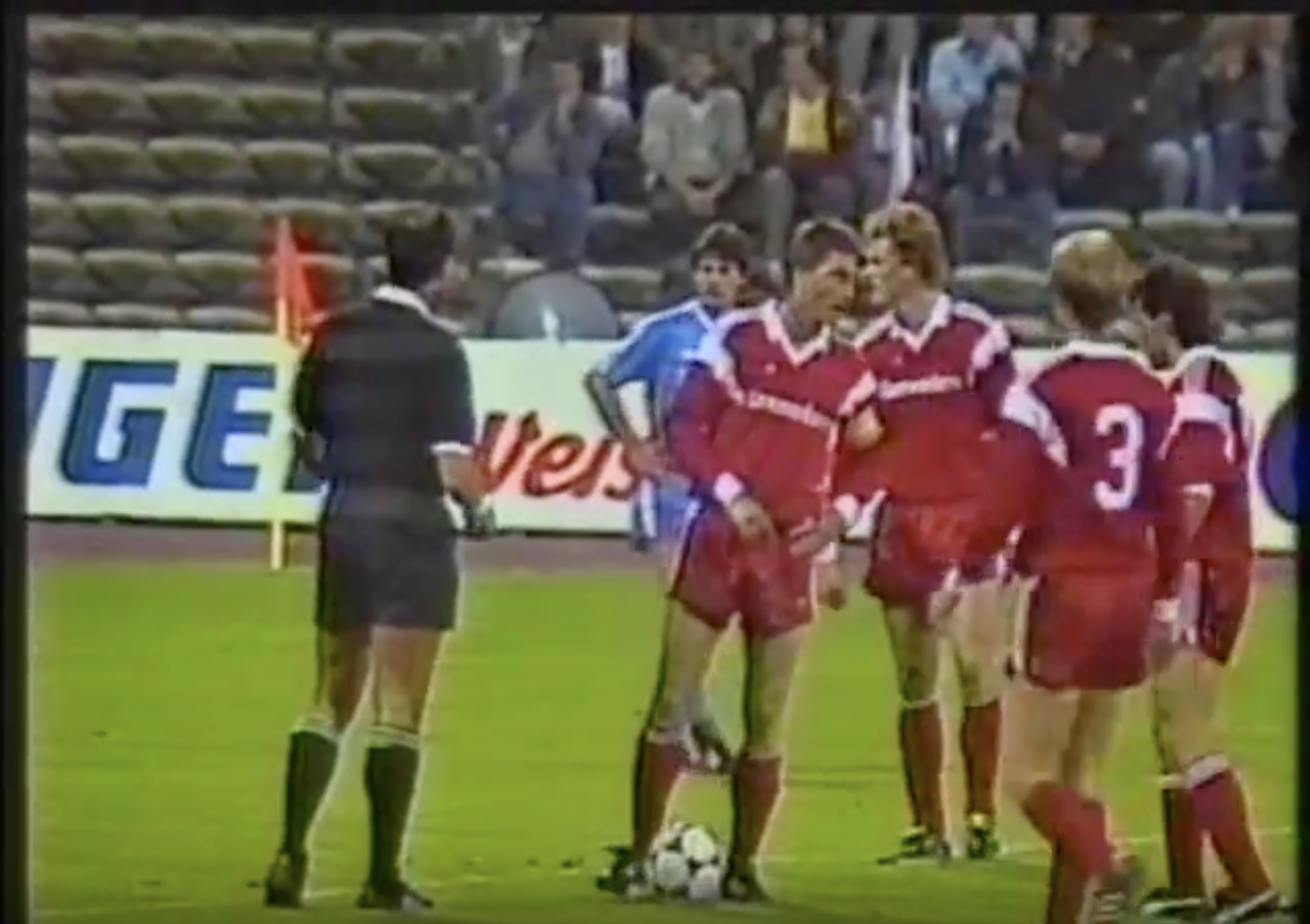
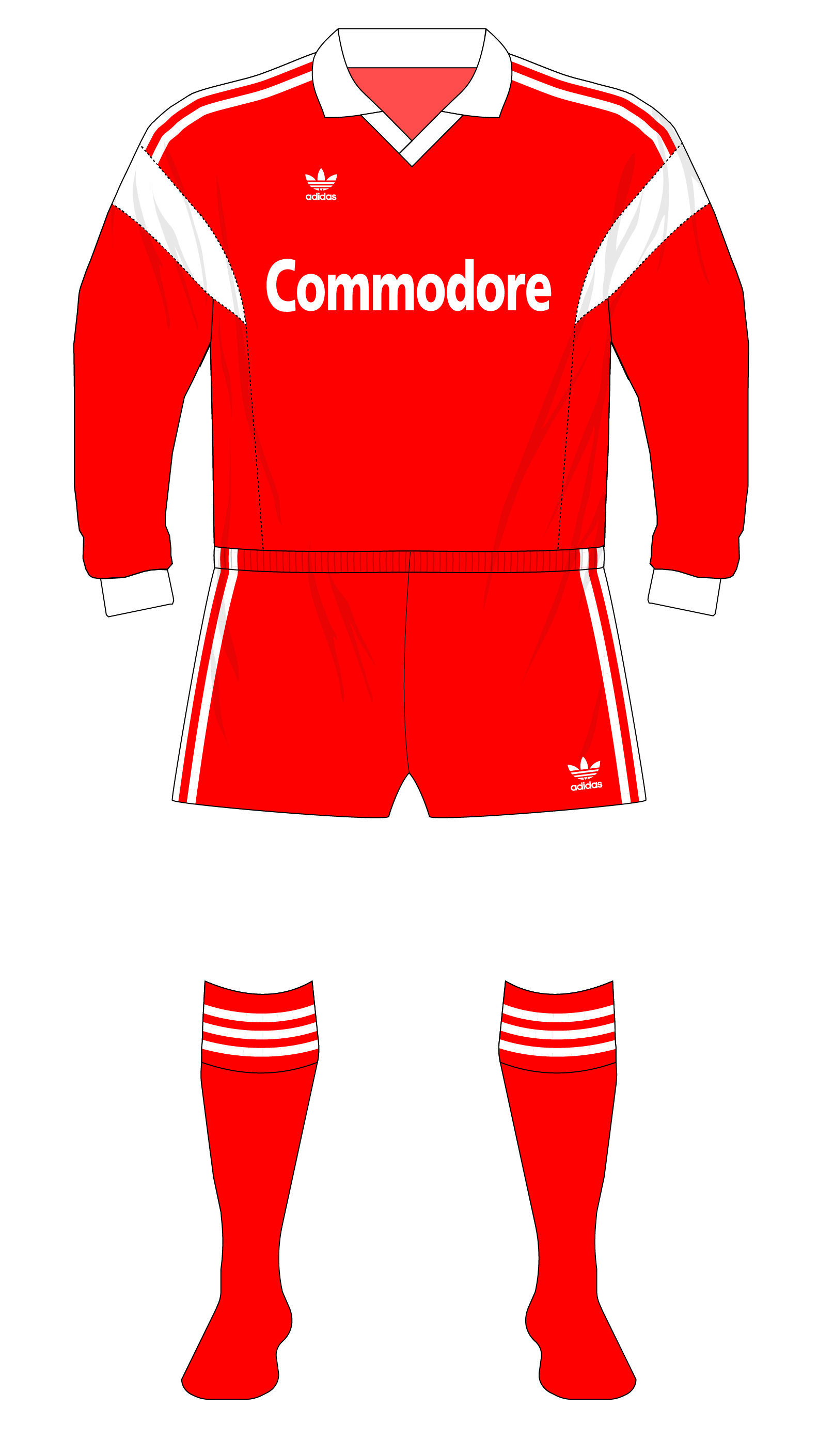
SECOND ROUND
Bayern wore shirts that had a red crew-neck in both legs of a 3-1 aggregate victory – 2-0 at home and 1-1 away – that had them well set for when the action resumed with the quarter-finals in March.
A similar shirt (see photo) was worn against Hearts of Midlothian in 1989.
QUARTER-FINALS
As with the 1985-86 competition, the last-eight draw pitted them against Anderlecht. While the Belgian side won out on that occasion, this time Bayern were dominant. The first leg was in Germany and they more or less ensured victory with a 5-0 win, with the snowy conditions leading to a half-time shirt change.
In the first half, a new style, featuring a white crew-neck and a wave pattern (another used by the USA and USSR) was worn while the second half saw a more common design, incorporating a wrapover v-neck and a hooped pattern. So cold was it that some Bayern players even wore goalkeeper gloves.
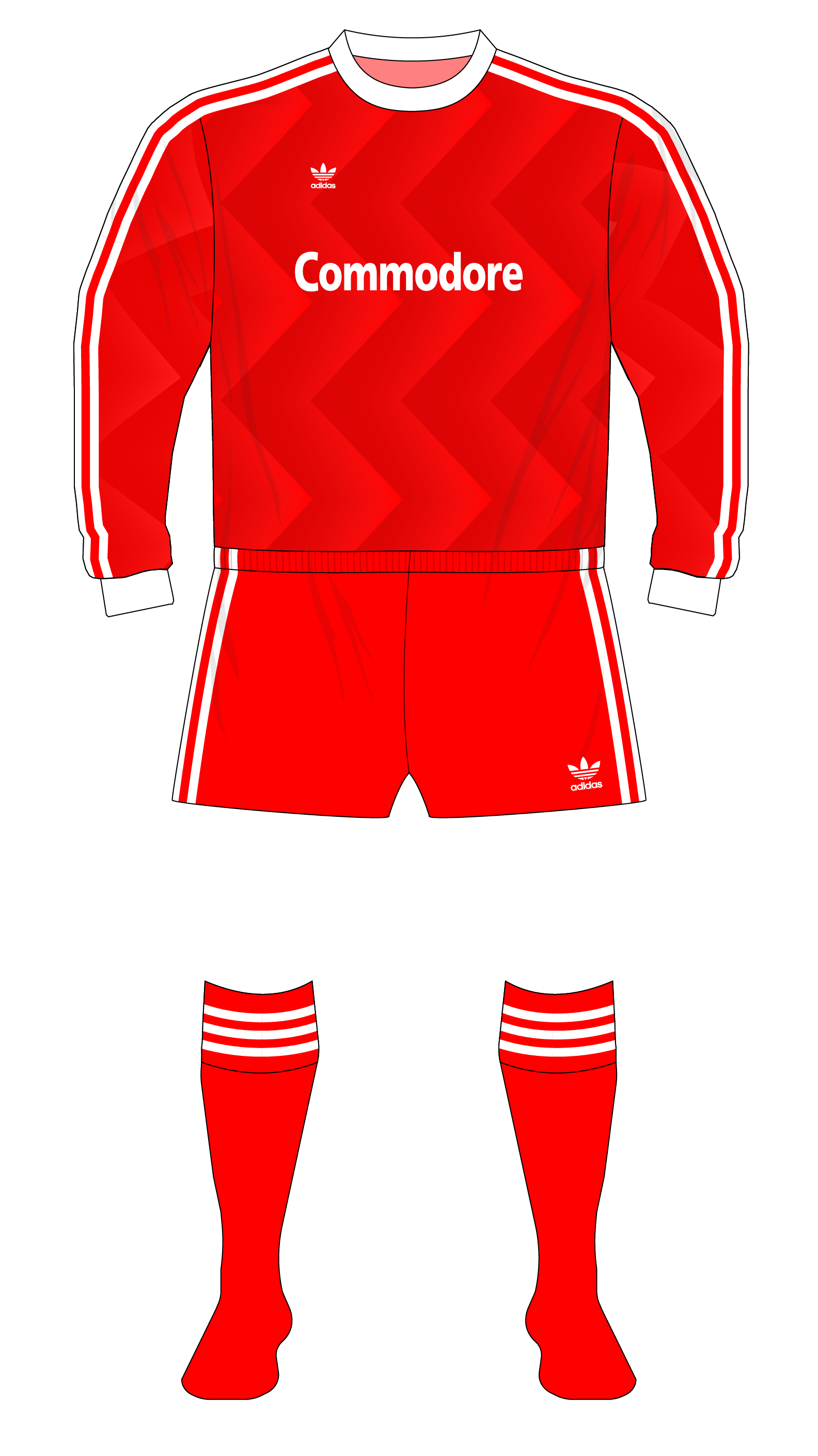
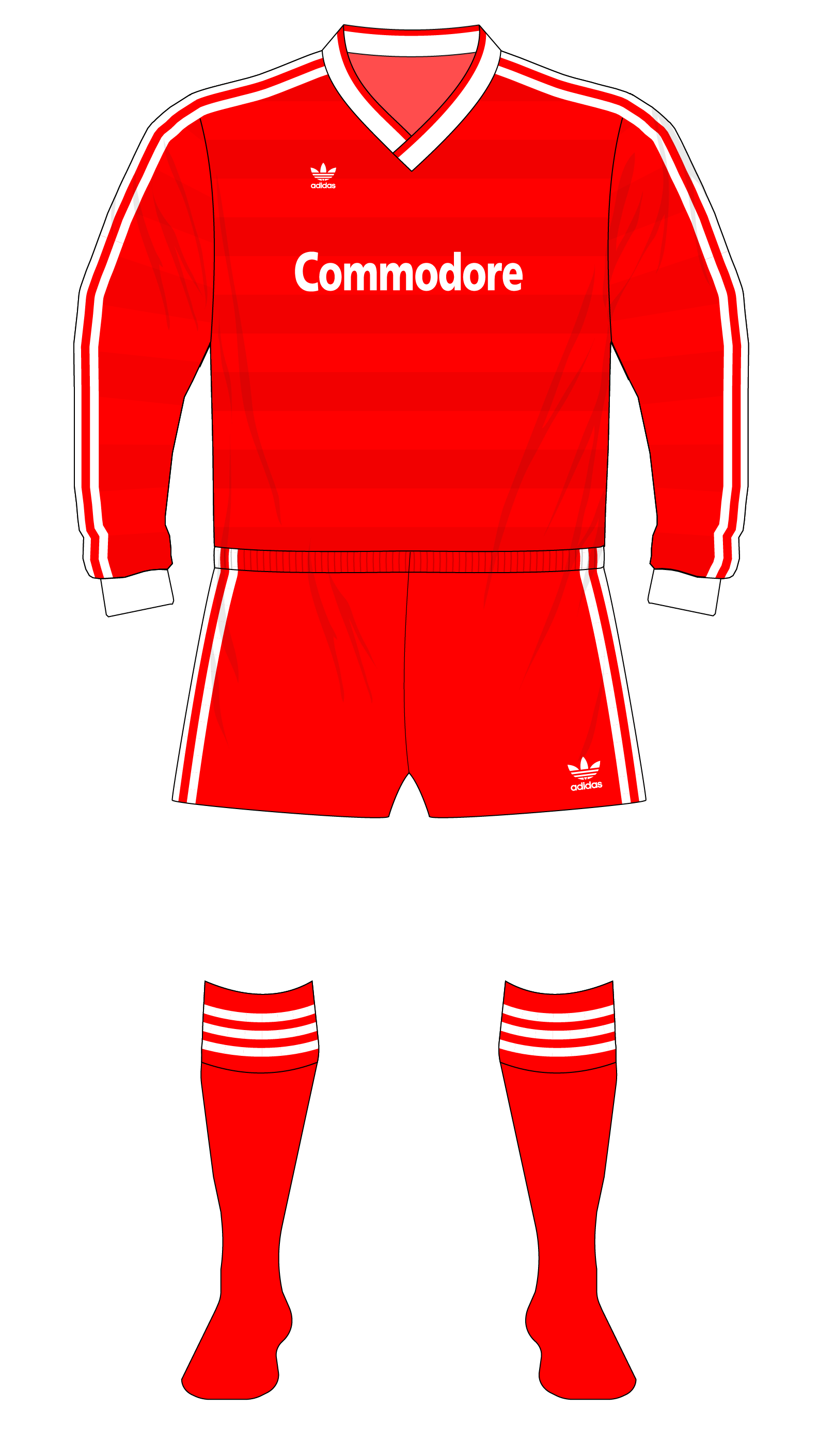
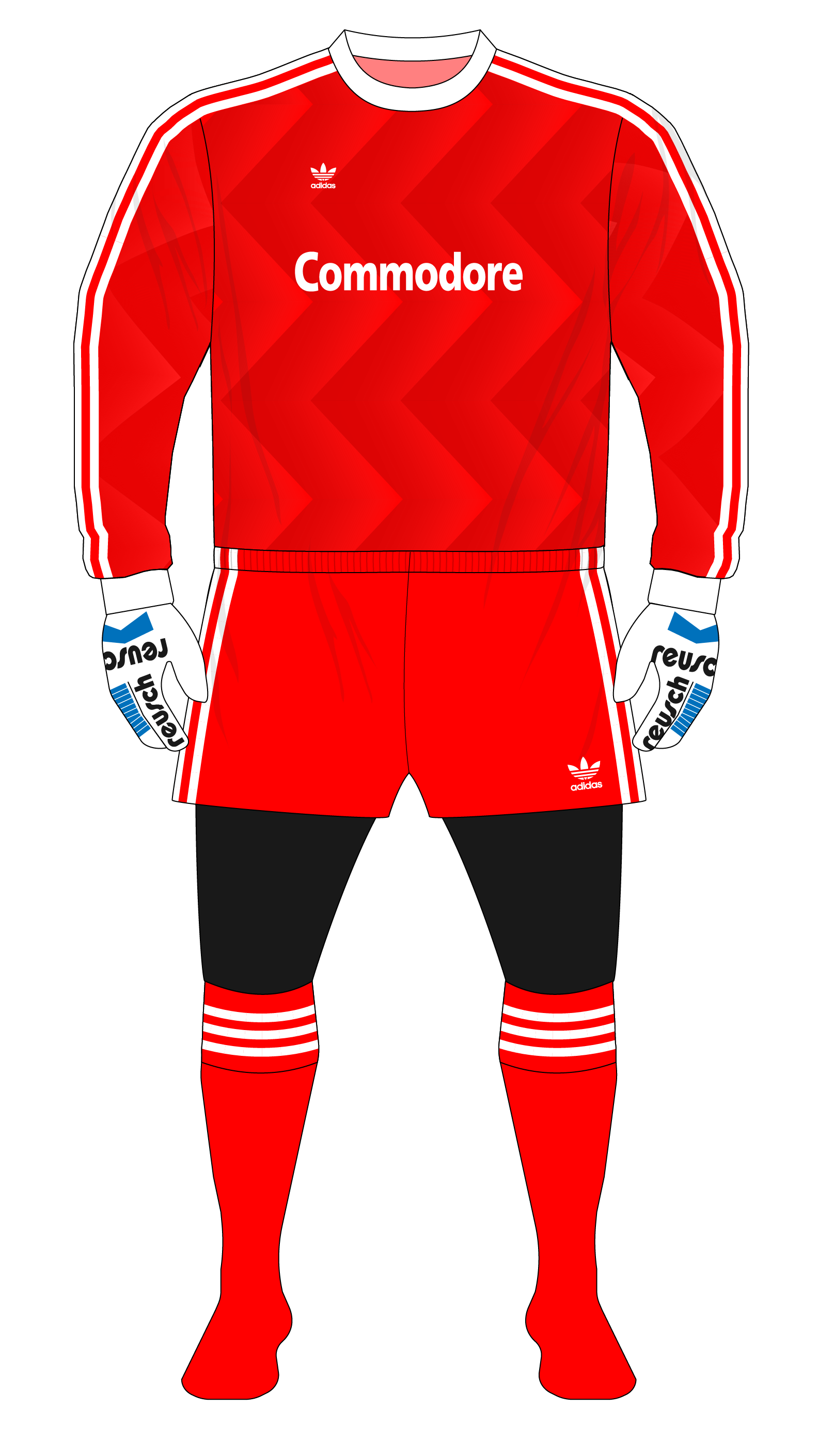
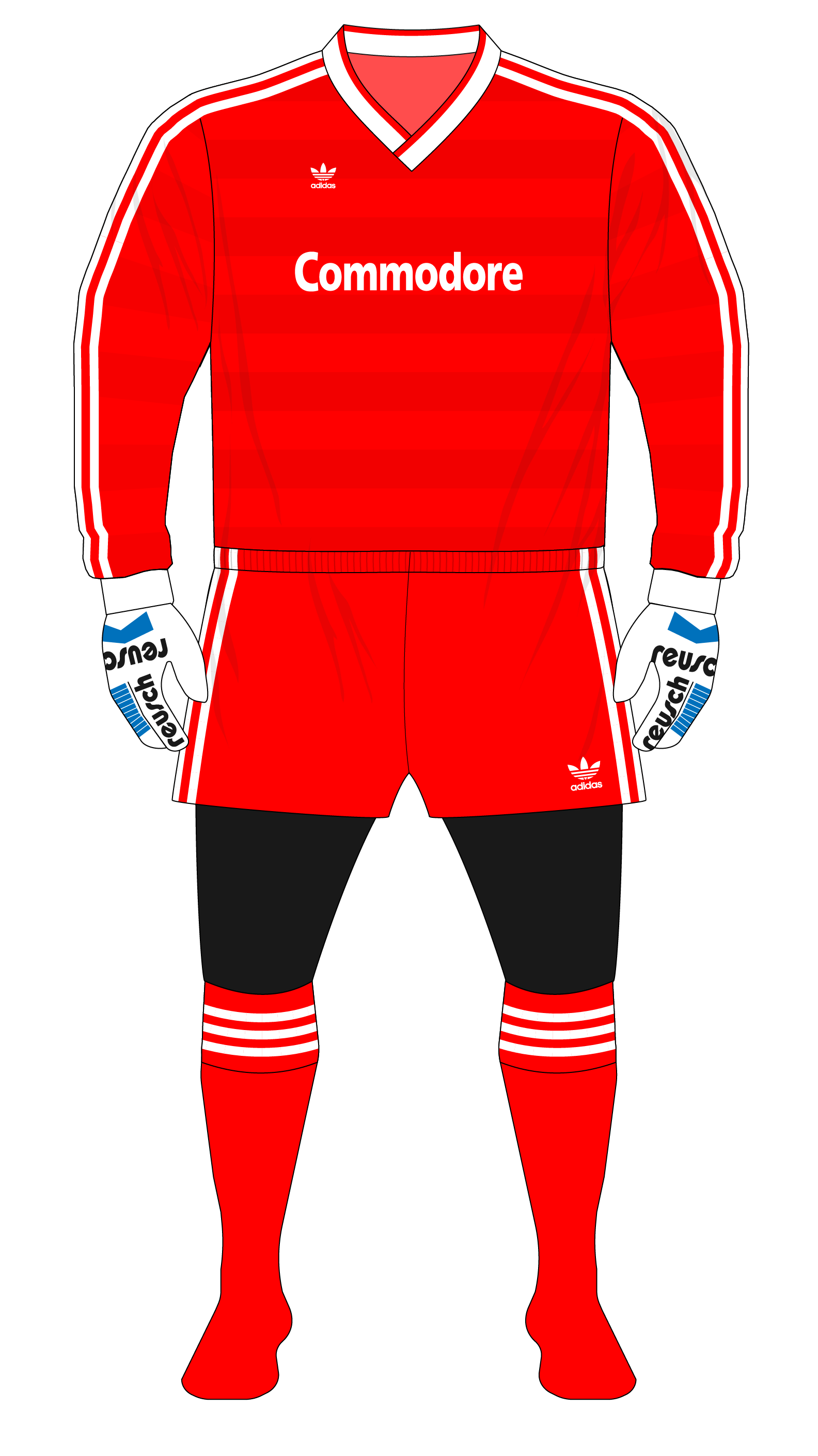
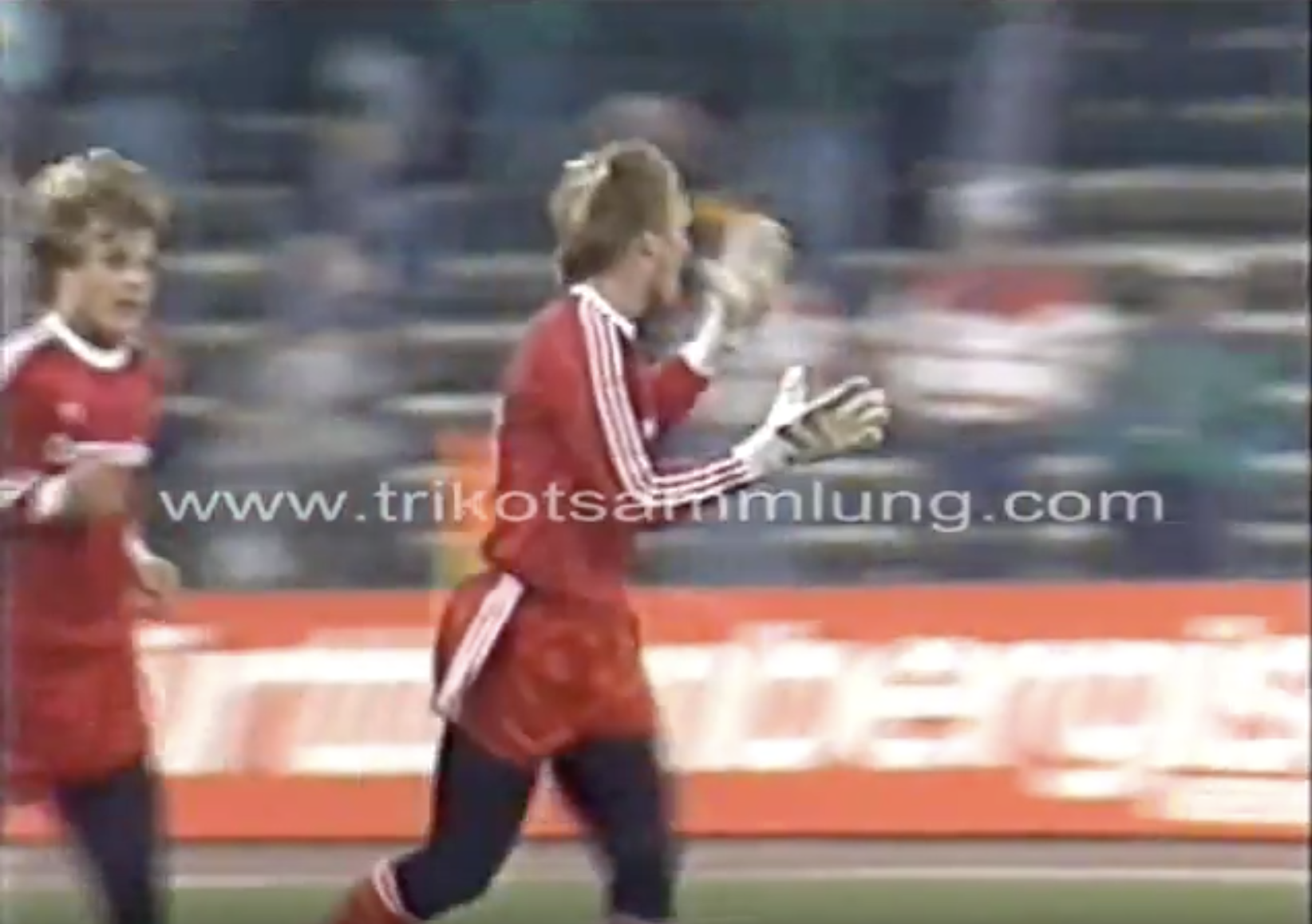
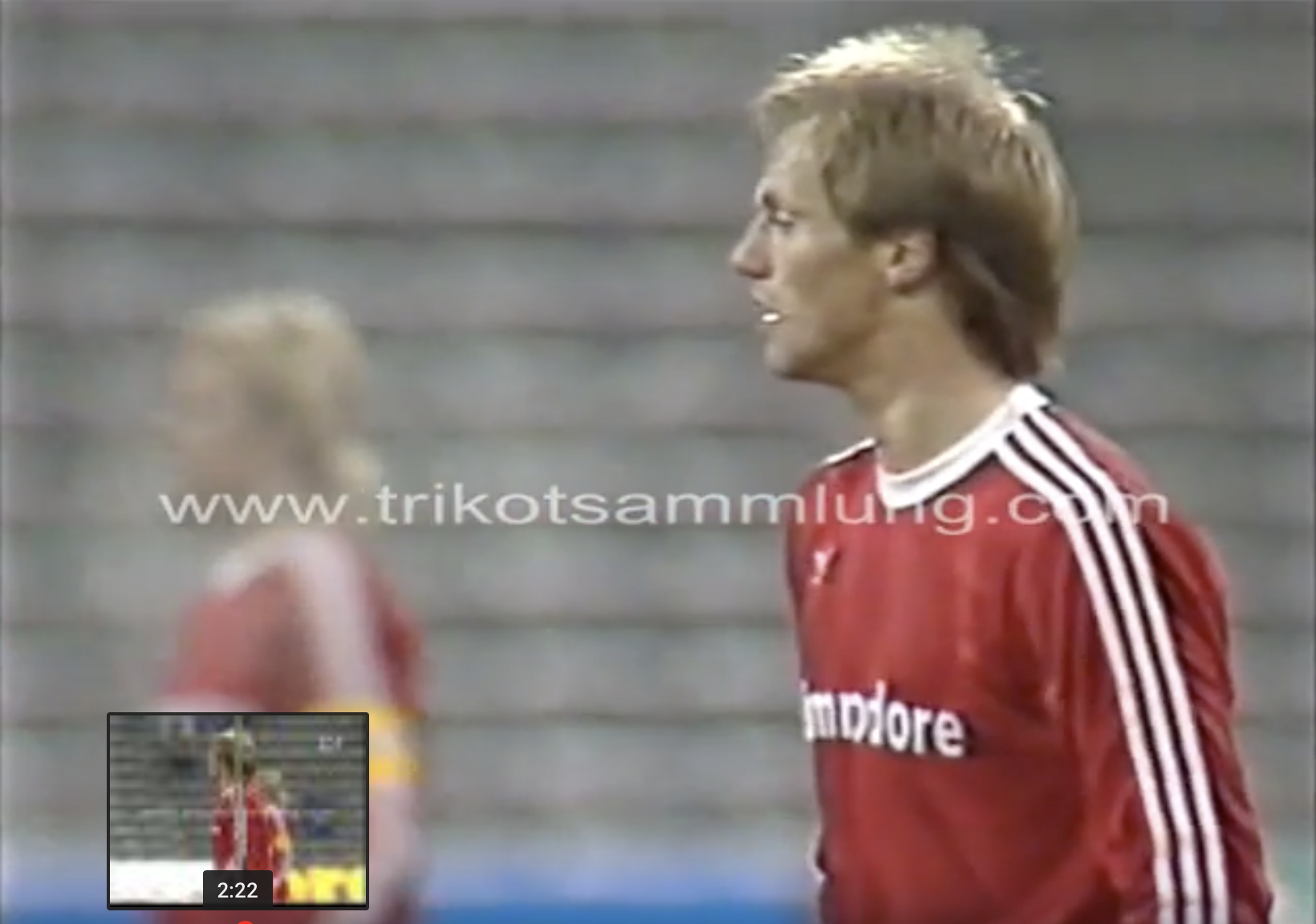
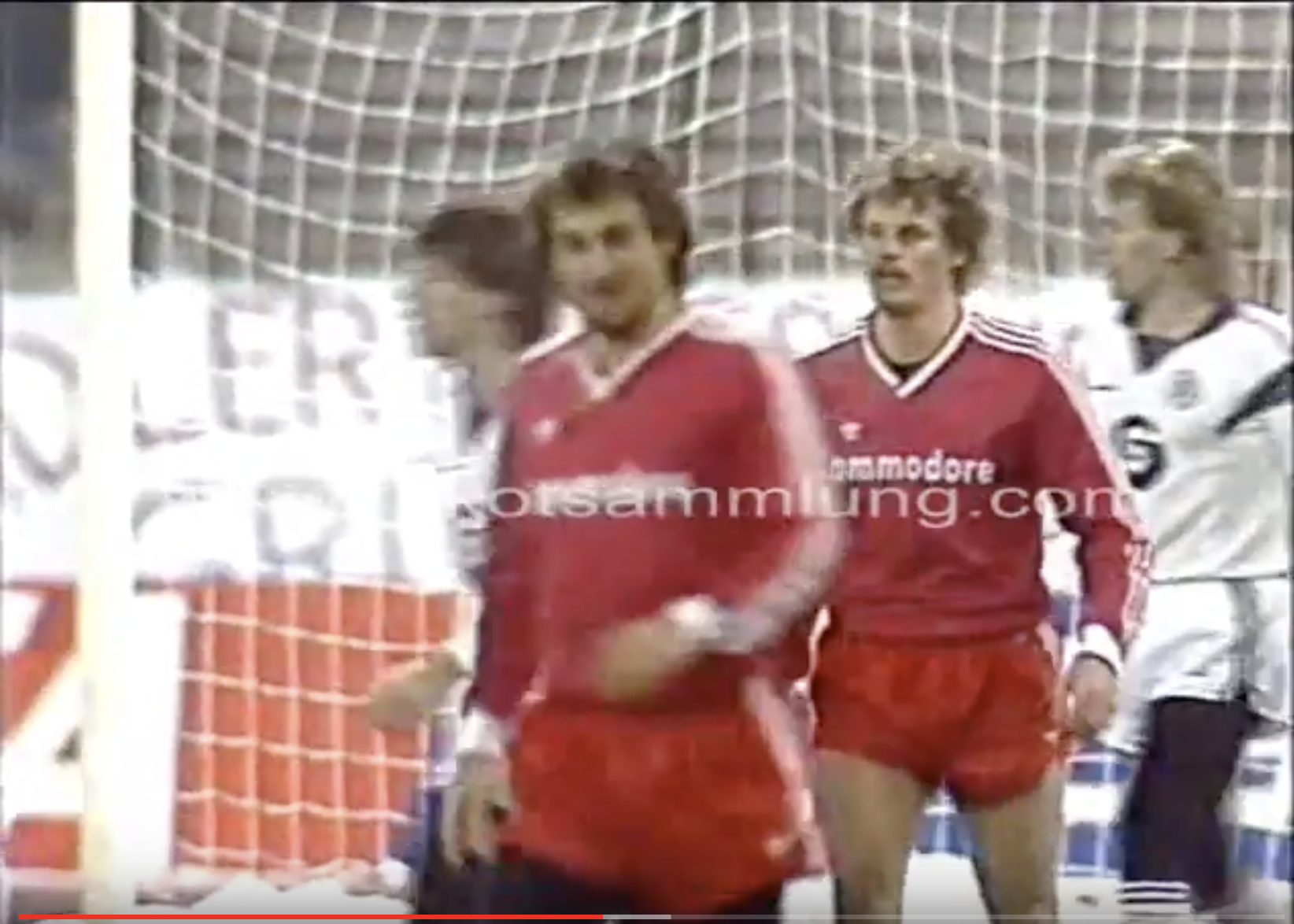
Two weeks later, a 2-2 draw in Brussels ensured Bayern went forward to the semi-finals. Unfortunately, it has been very difficult to definitively ascertain which shorts were worn in that second leg, but we think it was the same as the second half of the first leg.
SEMI-FINALS
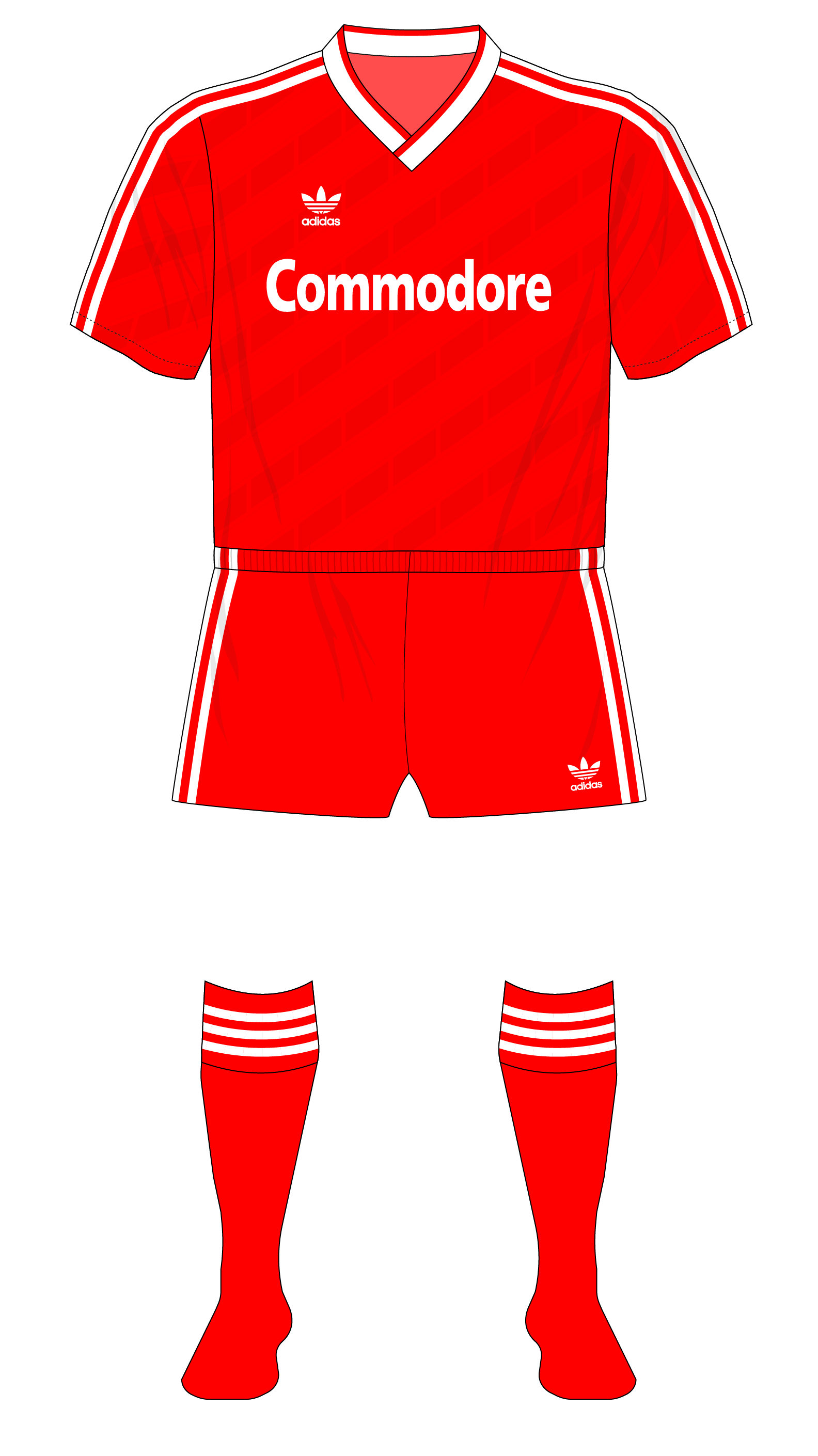
Standing between Bayern and a place in the final were Real Madrid but again a superb home display – resulting in a 4-1 win – put them in a great position. That game saw Bayern in short sleeves for the first time in that European campaign, the fabric pattern different once more, this time a series of parallelograms arranged on diagonal planes, a design which was also to come into vogue the following year.
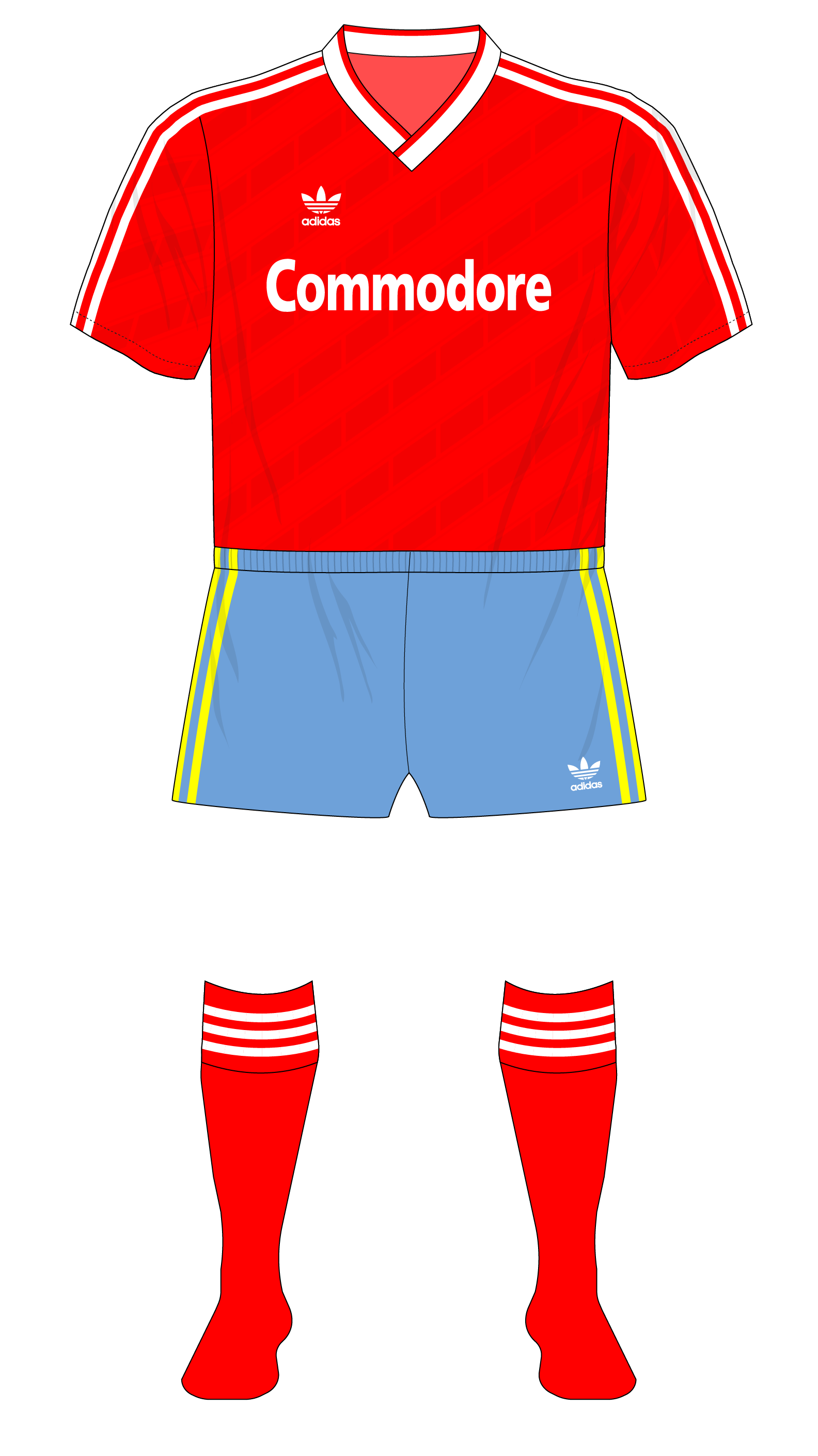
The same shirts remained for the second leg in Spain, but the light-blue shorts – worn in a 2-1 win at Hamburg a few weeks beforehand – were called upon. A 1-0 defeat in Madrid didn’t shake Lattek’s belief regarding their powers, though, as they were also used for the final against Porto.
FINAL
Maybe it was the fact that Bayern had lost the 1982 final to Aston Villa while wearing all-red – when all of the other finals from 1977-84 inclusive were won by teams in all-red – or perhaps the 1986 domestic cup final was an inspiration, but Bayern took to the field in Vienna in red-blue-red.
Porto were in their usual blue and white stripes with blue shorts and white socks – nowadays, Uefa wouldn’t allow both teams to have similar shorts.
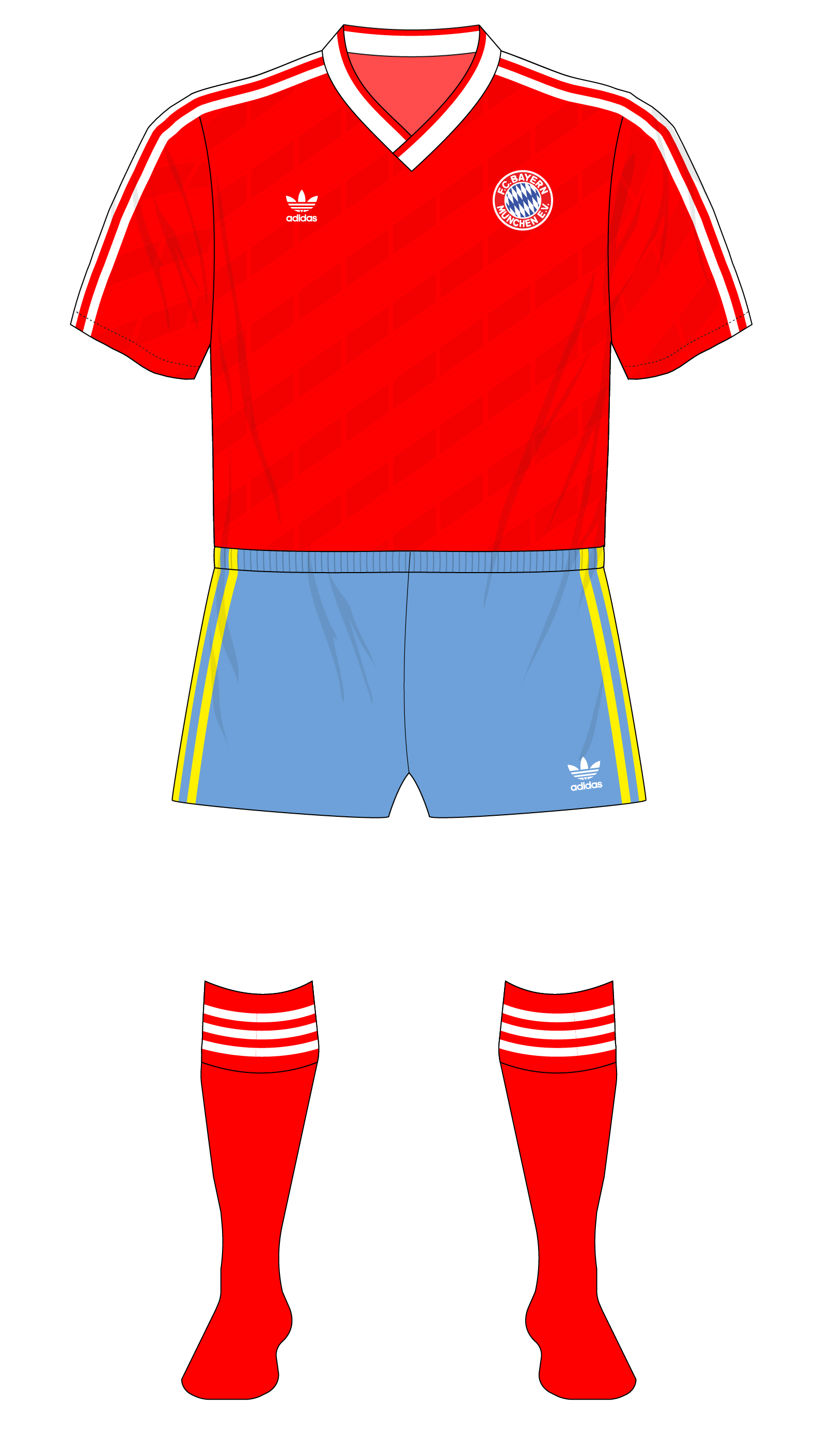
Sponsors still weren’t allowed for European finals so the chest was bare, but the club crest did appear, something which rarely happened until the 1990s.
Ludwig Kögl’s 24th-minute goal put Bayern ahead but, foreshadowing events of 12 years later to some extent, Bayern were undone by two second-half goals in quick succession as Rabah Madjer equalised in the 79th minute and Juary netted the winner on 81.
It proved to be Lattek’s last game in charge of Bayern and sky-blue shorts haven’t been worn with the red shirts since then.
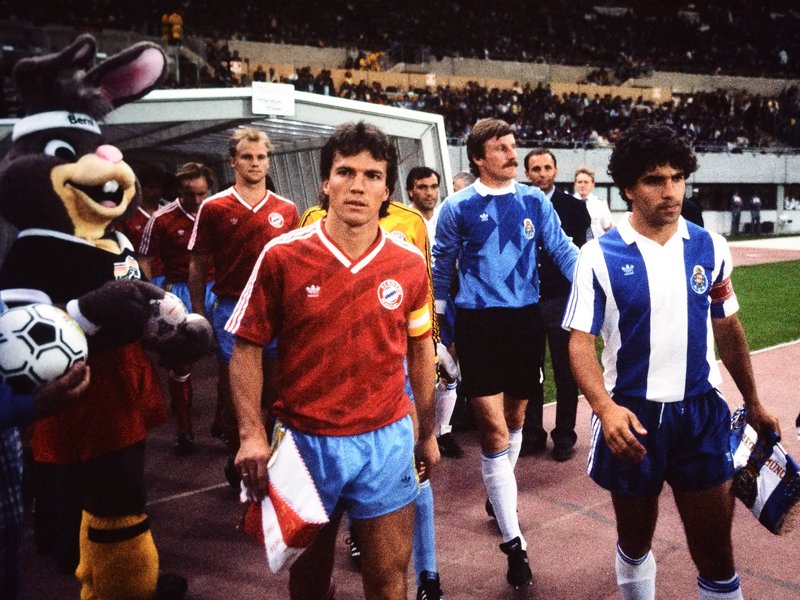
This blog was written by Museum of Jerseys. Please visit their website to read more interesting articles!


